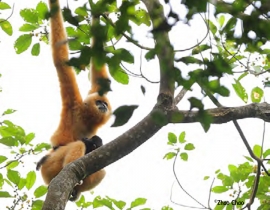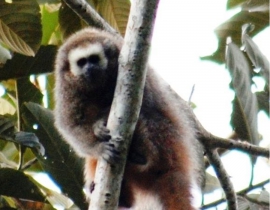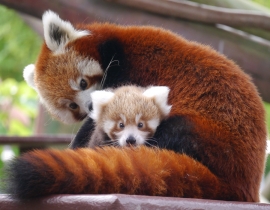Posted May 1, 2014 in All
The Conservation Breeding Specialist Group (CBSG) is a Specialist Group of the World Conservation Union’s (IUCN’s) Species Survival Commission (SSC). It provides species conservation planning expertise to governments, specialist groups, zoos and aquariums, and other wildlife organizations, by using expert facilitation and the application of science-based planning tools. CBSG is dedicated to planning a future for global wildlife species.
Update on Brown Howler Monkey Conservation in Argentina
 A year has passed since the Brown Howler Monkey Conservation Workshop was held in Argentina. At that time, the main goal was to assess brown howler population status and analyse the main threats to its persistence in Argentina. The biggest challenge identified for brown howler conservation in the region was yellow fever, an epidemic disease that can decimate howler monkey populations. The Brown Howler Monkey Conservation (BHMC) group has been working to raise awareness, develop further conservation actions and has produced a manuscript summarising the main results of the population analysis for brown howlers and the analysis of the yellow fever threat, which was published in March 2014. To estimate current brown howler distribution and abundance, the BHMC plans to carry out a survey using a trained dog to track brown howlers’ faeces.The BHMC will also start tackling actions involving mosquito trapping and isolation of yellow fever virus during 2014.
A year has passed since the Brown Howler Monkey Conservation Workshop was held in Argentina. At that time, the main goal was to assess brown howler population status and analyse the main threats to its persistence in Argentina. The biggest challenge identified for brown howler conservation in the region was yellow fever, an epidemic disease that can decimate howler monkey populations. The Brown Howler Monkey Conservation (BHMC) group has been working to raise awareness, develop further conservation actions and has produced a manuscript summarising the main results of the population analysis for brown howlers and the analysis of the yellow fever threat, which was published in March 2014. To estimate current brown howler distribution and abundance, the BHMC plans to carry out a survey using a trained dog to track brown howlers’ faeces.The BHMC will also start tackling actions involving mosquito trapping and isolation of yellow fever virus during 2014.
Conservation Status Assessments of the Amphibians and Reptiles of Costa Rica´s National Red List
In early March, 24 herpetologists representing 14 institutions gathered to assess the population status of 201 amphibian species and 241 reptile species native to Costa Rica. The goal of the workshop was to compile a list of the threat status of native amphibians and reptiles. The resulting list will be given to the National Conservation Areas System of the Environment Ministry to be used as the Costa Rica National Red List. As a result of the workshop, the threat category of some species changed. The list is expected to be completed by August 2014.
Hainan Gibbon Conservation Planning Workshop
Once numbering around 2,000 in the 1950s, the Critically Endangered Hainan gibbon (Nomascus hainanus) now is one of the most endangered primate species in the world due primarily to past habitat loss and poaching. A conservation planning workshop for the Hainan gibbon was held in 2003. Since that time, numerous management activities have been conducted, including efforts to protect and restore potential gibbon habitat, with concurrent growth in the gibbon population up from 13 individuals. Despite these positive actions, the small size of this single population means that it continues to be at high risk CBSG was invited to facilitate and provide modelling support at an international species conservation planning workshop for the Hainan gibbon to update the conservation plan. Over 50 scientists participated in the mid-March workshop. Key goals included the effective protection of current habitat; the expansion of gibbons into additional good quality habitat; continued monitoring and improved understanding of factors affecting successful dispersal, breeding group formation, and colonization into new habitat; development of an emergency action plan in the event of a crisis situation; and improved communication to facilitate collaboration among stakeholders. A summary of the workshop and Hainan gibbon situation can be found here.



